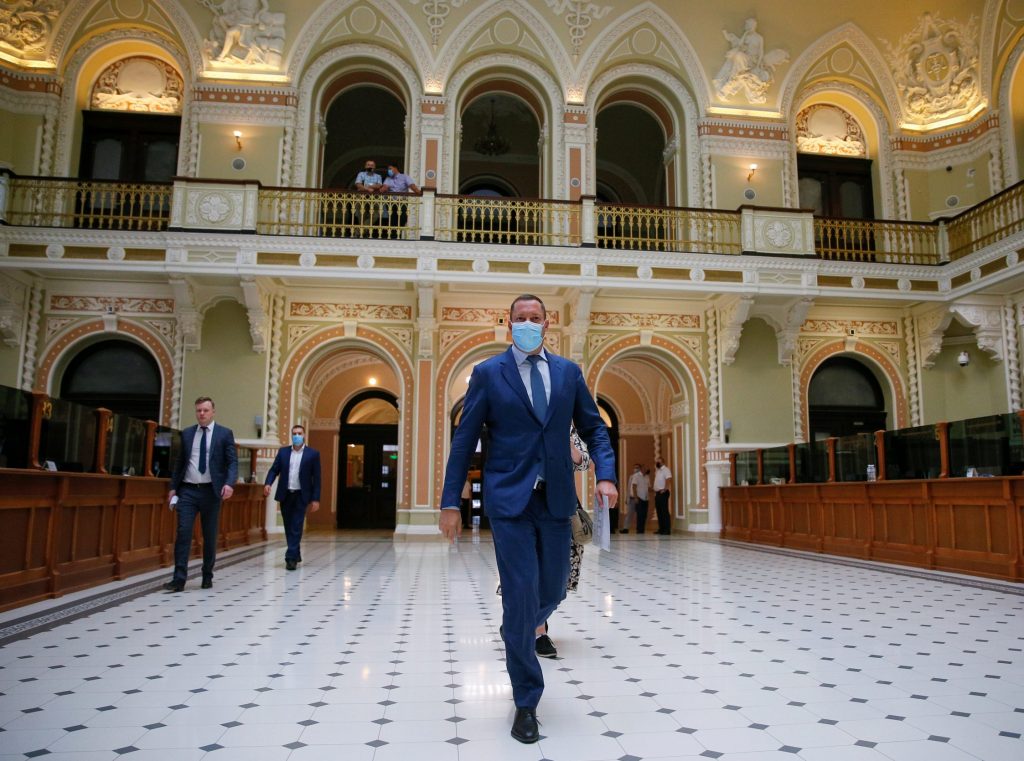The Ukrainian banking sector has never been so resilient. In terms of capital, liquidity, profitability, and technological innovation, the country’s banks have proven more than a match in recent months for the challenges presented by the coronavirus pandemic.
While these indicators are all individually important, the most striking feature of today’s Ukrainian banking system is the return of public trust. The brief outflow of deposits witnessed during the first weeks of quarantine conditions in March 2020 is now a distant memory. Instead, we are experiencing a period of rapid growth. At present, the annual growth rate for household deposits in domestic currency is 27%, while the rate for foreign currency accounts is 5%.
This growth is particularly striking given that it is taking place against a backdrop of declining interest rates. The National Bank’s decision to reduce the key policy rate from 11% to 6% has led to single digit rates on deposits and loans for the first time in Ukraine’s history.
The current favorable conditions are providing Ukrainian businesses with access to more affordable loans. This is allowing them to cover short-term needs and finance large-scale projects. The last two months of the summer 2020 period offered cause for guarded optimism in this respect, with a 2.2% rise in business loans alongside a 3% increase in household loans. It is still far too early to talk about a leap in financing, but we are clearly moving in the right direction.
There is little sign that lower interest rates are harming profit margins in Ukraine’s banking sector. While the figures reported so far this year are slightly lower than for the same period in 2019, they remain relatively high. During the first eight months of 2020, the Ukrainian banking sector posted profits of UAH 33 billion, with a slight year-on-year decline attributable to lower public demand for banking services due to the coronavirus-related economic downturn.
Stay updated
As the world watches the Russian invasion of Ukraine unfold, UkraineAlert delivers the best Atlantic Council expert insight and analysis on Ukraine twice a week directly to your inbox.
In the current pandemic conditions, the digitization of financial services has become a priority for banks around the world. The Ukrainian banking system is increasingly at the forefront of this global digital transformation. An expanding range of payments, including for everyday items such as utilities, can now be made via the mobile applications of any Ukrainian bank.
Since August 2020, we have launched our system of electronic payments (SEP) in 24/7 mode. This gives banks operating in Ukraine the opportunity to make payments to the recipient around the clock.
The speed of the Ukrainian banking system’s digital transformation owes much to the readiness with which the Ukrainian public embraces new technologies. Thanks to the often rapid pace of change during the post-Soviet period, the Ukrainian public has developed a strong international reputation as enthusiastic adopters of innovation.
This trend is evident in the growth of contactless payments via smartphones. According to figures released by Mastercard in 2019, Ukraine ranked fourth globally in terms of the number of contactless transactions. Meanwhile, the popularity of contactless payments is fueling the development of Ukraine’s payment infrastructure. Around 85% of commercial POS terminals in the country currently offer the option of contactless payment.
The same growth trends are visible in Ukraine’s banking card segment, with steady increases in the number of non-cash transactions. The share of non-cash transactions in the first eight months of 2020 was 55%, which is a slight increase on the 50% figure registered at the beginning of the year.
Throughout the Ukrainian banking sector, we are seeing further indications of the financial system’s switch to digital mode. Just a few years ago, the idea of opening a bank account without visiting a physical branch office would have seemed far-fetched. This is now something anyone can do via their smartphone and a digital passport.
Eurasia Center events

A combination of digital innovations and growing public trust is enabling Ukrainian banks to expand their customer base and compete for new clients. This is bringing higher returns for shareholders. It is also making the sector significantly more attractive to international investors. Given the large current state presence in the Ukrainian banking sector and our ambitious privatization plans, Ukraine’s state-owned banks are set to attract increasing attention in the international business media over the coming few years.
At present, Ukrgasbank is working with the International Finance Corporation (IFC) and is the state-owned bank that is closest to partial privatization. An agreement is already in process and talks are now focused on technical aspects, with expectations of a successful closure. We also expect an international financial organization to acquire a stake in Ukraine’s largest state-owned bank, Oschadbank, but there is still significant work to be done to revise the relevant legislation and develop the bank’s business model.
Despite the difficulties currently facing the global economy, we intend to proceed with privatization and meet our targets for the planned reduction of the state-owned stake in Ukraine’s banking market. We have already discussed plans for a smaller state presence in the Ukrainian banking sector with representatives of the London Stock Exchange. Our current strategy for the partial privatization of Ukraine’s state-owned banks envisages that steps towards sales will begin no later than by the end of 2024.
I am confident that by then, the reform of corporate governance at state-owned banks will have brought the desired results. This will mean improved operational efficiency and greater transparency, along with a reduction in problem loans. We will then be able to privatize the Ukrainian banking sector and build on the progress that has already been achieved in recent years.
Kyrylo Shevchenko is the Governor of the National Bank of Ukraine.
Further reading
The views expressed in UkraineAlert are solely those of the authors and do not necessarily reflect the views of the Atlantic Council, its staff, or its supporters.

The Eurasia Center’s mission is to enhance transatlantic cooperation in promoting stability, democratic values and prosperity in Eurasia, from Eastern Europe and Turkey in the West to the Caucasus, Russia and Central Asia in the East.
Follow us on social media
and support our work
Image: National Bank of Ukraine Governor Kyrylo Shevchenko pictured inside the country's central bank on July 20, 2020. (REUTERS/Gleb Garanich)




